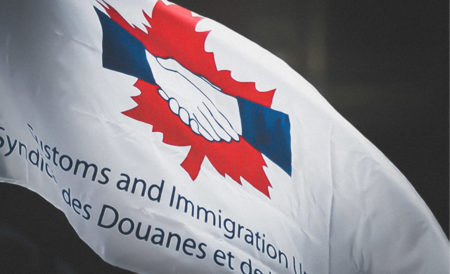In February 2022, thanks to the hard work of the CIU labour representation team and after continued pressure on CBSA by CIU members, the National Joint Council (NJC) Executive Committee upheld grievances from CIU members asking to be paid the First Aid Allowance, moving forward.
Now, following steadfast advocacy by CIU, CBSA has announced that the Agency was ready to start providing the first aid allowance to all eligible Border Services Officers (BSOs).
An important step forward
This represents a significant victory for our union and our members. The intent of the NJC’s directive on First Aid to the General Public – Allowance for Employees is to pay employees required to be available to render first aid to the general public. BSOs have always been and continue to be readily available to provide first aid to those in need. They do so because they are trained peace officers who care for the well-being of those transiting through our borders. While they are expected to provide first aid, they are not expected to provide advanced medical response or treatment like first responders. They therefore fall squarely within the scope of the NJC’s directive on first aid to the general public.
CIU is glad to see that despite CBSA’s initial arguments, the Agency has accepted the NJC’s decision and has been working to implement it.
Who is eligible?
As per recent communications from CBSA:
In order to qualify for the first aid allowance, you must be a BSO and:
- be formally required by the agency to be available on a regular basis to provide first aid to the general public in addition to your regular duties
- work at a location where there is a lack of readily available emergency medical treatment facilities in the immediate area (within a radius of 10 kilometres)
- be required to undertake and complete first aid training (StJohn Ambulance Standard Certificate) at the expense of the agency and maintain this level of first aid capability
We invite all members to review the list of CBSA work locations eligible for the first aid allowance, available on Apollo. If your work location is not included in the list provided by CBSA, and if you think it meets the criteria listed above (namely located 10 km or further from emergency medical treatment facilities), please contact your Branch President.
How to receive the allowance?
BSOs must apply to start receiving the allowance. As per CBSA, “payment of the first aid allowance will be bi-weekly, backdated to February 1, 2022.” To apply, please fill out and submit the Form for Payment of the First Aid Allowance (provided by CBSA on Apollo) to CBSA Compensation Services, along with the relevant first aid certificate (note that expired certificates may be accepted). The form will need to be signed by your immediate supervisor.
Are non-BSOs (FB-03s) eligible?
If you are not a Border Services Officer, but work at an eligible location, are expected to render first aid to the general public, and have a first aid certificate, you should contact your Branch President along with CBSA Compensation Services.
What to do if you change work location
Important: Members who are currently assigned to a work location that meets the criteria listed to qualify for the first aid allowance and who move to a different work location which does not meet said criteria should notify CBSA Compensation Services of the change to avoid overpayment.
If you are unsure if you are eligible for the first aid allowance following a change in work location — or in general — please contact the CBSA Compensation Services and/or your Branch President.





